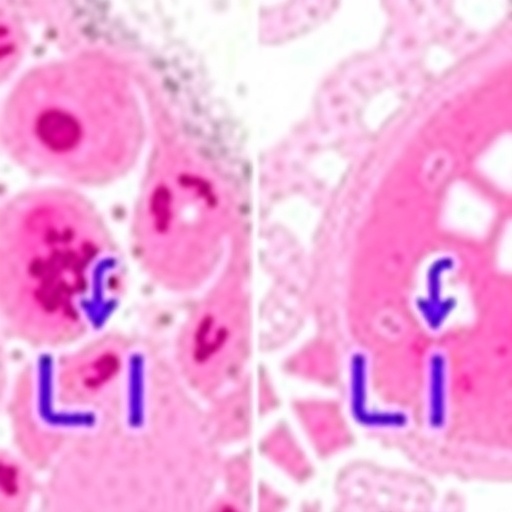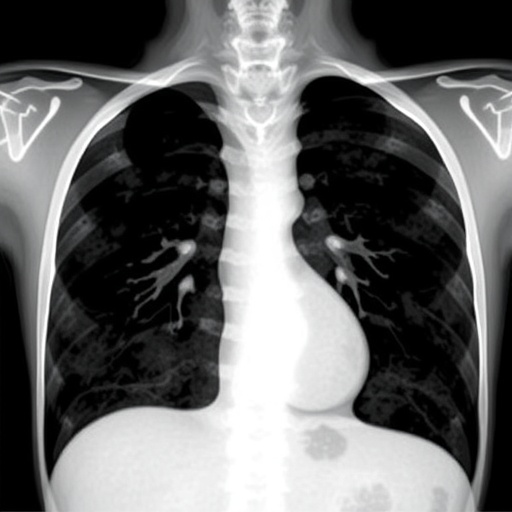In a pivotal study that dives deep into the intricacies of breast cancer subtypes, researchers from Osaka Metropolitan University have uncovered nuanced differences between HER2-low and HER2-zero breast cancers, challenging previously held notions and potentially reshaping future diagnostic and treatment paradigms. Published in the renowned BMC Cancer journal, this compelling investigation sheds light on how the subtle molecular distinctions within HER2-negative breast cancers influence sentinel lymph node biopsy outcomes and patient prognoses.
Human epidermal growth factor receptor 2 (HER2) status has long been a cornerstone in breast cancer classification and treatment strategy. Traditionally, breast cancers were dichotomized as HER2-positive or HER2-negative, with the latter group being treated more uniformly. However, as molecular techniques evolve, the recognition of a HER2-low subset—tumors expressing low levels of HER2 protein but lacking gene amplification—has opened new avenues for research. This study meticulously examined whether these biological differences manifest clinically, especially concerning sentinel lymph node metastasis (SLNM) and survival outcomes.
The sentinel lymph node biopsy (SLNB) remains a gold standard for staging and guiding treatment in breast cancer by detecting lymphatic spread. Identifying variables that predict SLNM is critical, as lymph node involvement is a strong prognostic factor and influences adjuvant therapy decisions. The research team focused their retrospective analysis on 965 estrogen receptor (ER)-positive and HER2-negative breast cancer patients who underwent SLNB. By categorizing these patients into HER2-low and HER2-zero groups based on immunohistochemical evaluation, they endeavored to draw correlations between HER2 expression levels and clinical outcomes.
Significantly, the study unveiled that patients with HER2-low breast cancer exhibited a higher incidence of sentinel lymph node metastases compared to those with HER2-zero tumors. The statistical robustness of this finding, marked by a p-value of 0.039, underscores a meaningful biological divergence. This revelation hints at a more aggressive lymphotropic behavior within the HER2-low subset, which contrasts with the earlier perception that all HER2-negative tumors behave homogeneously. Understanding this distinction is vital for oncologists to tailor lymph node management strategies more precisely.
Despite the increased SLNM rates in HER2-low cases, survival analyses painted a more complex picture. Upon evaluating disease-free survival (DFS), recurrence-free interval (RFI), overall survival (OS), and breast cancer-specific survival (BCSS), the study found no statistically significant differences between HER2-low and HER2-zero groups. This suggests that while HER2-low tumors may have an enhanced propensity for early metastasis to sentinel nodes, this does not necessarily translate into poorer long-term outcomes for patients. Such nuanced findings challenge clinicians to look beyond nodal involvement alone when prognosticating.
Intriguingly, a refined subgroup analysis that excluded patients with macrometastases revealed that HER2-low patients enjoyed significantly longer DFS and RFI periods compared to their HER2-zero counterparts. This counterintuitive result implies that within the spectrum of lymph node involvement, the prognostic impact of HER2-low status might confer certain survival advantages under specific pathological contexts. It lends support to the concept that the molecular milieu of HER2-low breast cancer influences tumor biology in a multifaceted manner, affecting progression dynamics differently.
The potential mechanisms underpinning these differences remain an area ripe for exploration. HER2-low tumors, by virtue of their distinct protein expression levels, may engage alternative signaling cascades or interact with the tumor microenvironment differently than HER2-zero tumors. This could modulate tumor cell dissemination, immune evasion, or therapeutic responsiveness. Further molecular profiling and functional studies are essential to decrypt these pathways, with the ultimate goal of harnessing this knowledge for targeted therapy development.
From a clinical standpoint, these findings carry profound implications. Current treatment guidelines for HER2-negative breast cancers do not differentiate based on HER2-low status, potentially overlooking a subgroup with unique metastatic tendencies. Incorporating HER2-low classification into standard practice might refine surgical decision-making, such as the extent of lymph node dissection, and optimize adjuvant treatment allocation, especially in ER-positive cases where hormone receptor status is also influential.
Moreover, the advent of novel HER2-targeted agents showing efficacy in HER2-low breast cancer provides additional context to this study. Drugs such as antibody-drug conjugates have demonstrated promising results, challenging the dogma that only HER2-positive patients benefit from HER2-directed therapies. This research underscores the clinical relevance of accurately identifying HER2-low tumors, reinforcing the potential for precision oncology to transform patient outcomes.
Notably, the study’s retrospective nature and single-institution data source warrant cautious interpretation. While the patient cohort was sizeable, prospective multicenter trials are needed to validate these findings and fully elucidate the clinical ramifications of HER2-low breast cancer biology. Integrating genomic and proteomic data in future studies will enrich the understanding of the molecular underpinnings driving the observed clinical phenomena.
The comprehensive evaluation performed by Takada et al. provides a crucial stepping stone toward redefining breast cancer subclassifications. Recognizing HER2-low breast cancer as a distinct entity with specific metastatic behavior, yet comparable overall prognosis to HER2-zero cases, challenges simplifications in oncology paradigms. It prompts a reevaluation of diagnostic thresholds, encourages biomarker-driven treatment strategies, and spurs innovation in personalized medicine.
In conclusion, the nuanced differences between HER2-low and HER2-zero breast cancers unveiled by this study invite a paradigm shift in breast cancer management. The heightened sentinel lymph node metastasis propensity in HER2-low cases, alongside its complex relationship with survival metrics, emphasizes the need for more granular tumor characterization. As oncology continues to embrace molecular heterogeneity, such research paves the way for refined prognostic tools and tailored therapies that can ultimately improve patient care.
This landmark study, published in BMC Cancer, serves as a reminder that cancer is not a monolith but a constellation of diseases requiring equally sophisticated clinical approaches. Identifying subtle molecular variations holds the key to unlocking improved outcomes and fostering hope for millions affected by breast cancer worldwide.
Subject of Research: Differences in sentinel lymph node biopsy outcomes and prognosis between HER2-low and HER2-zero breast cancers.
Article Title: Differences in Sentinel lymph node biopsy outcomes and prognosis between HER2-low and HER2-zero breast cancer
Article References:
Takada, K., Kashiwagi, S., Nishikawa, M. et al. Differences in Sentinel lymph node biopsy outcomes and prognosis between HER2-low and HER2-zero breast cancer. BMC Cancer 25, 1518 (2025). https://doi.org/10.1186/s12885-025-14970-8
Image Credits: Scienmag.com
DOI: https://doi.org/10.1186/s12885-025-14970-8
Tags: adjuvant therapy decisions lymph node involvementBMC Cancer journal publicationbreast cancer staging techniquesbreast cancer subtypes molecular distinctionsHER2 expression levels impact on survivalHER2 status diagnostic implicationsHER2-low vs HER2-zero differencesHER2-negative breast cancer treatmentlymphatic spread in breast cancerOsaka Metropolitan University breast cancer studysentinel lymph node metastasis outcomesSLN biopsy breast cancer prognosis





